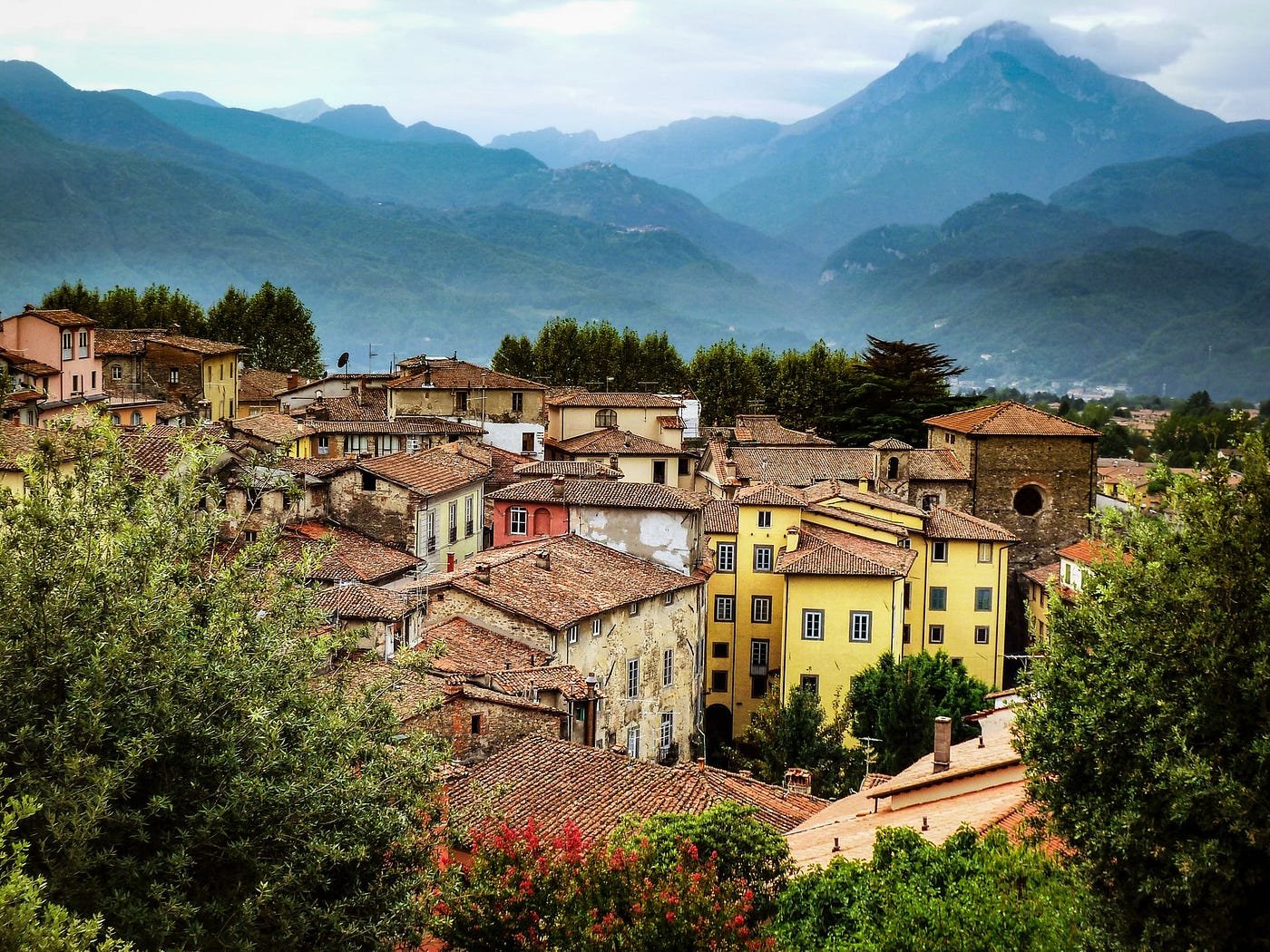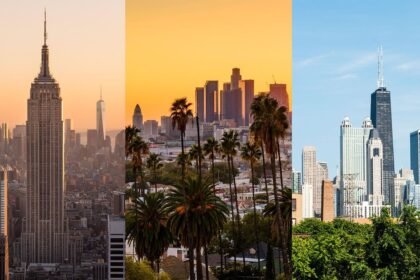Where Tuscany Meets the Most Scottish Town in Italy
Tucked in the heart of Tuscany’s serene Serchio Valley, Barga sits between the Apuan Alps and the Apennine slopes. This medieval town has an identity that surprises many. Barga doesn’t just resemble a typical Tuscan hilltop village with Renaissance charm — it proudly claims the title of the most Scottish town in Italy. Its cobbled streets echo stories of migration, identity, and cultural fusion. These tales link the Italian landscape to Scotland’s rugged coastlines.
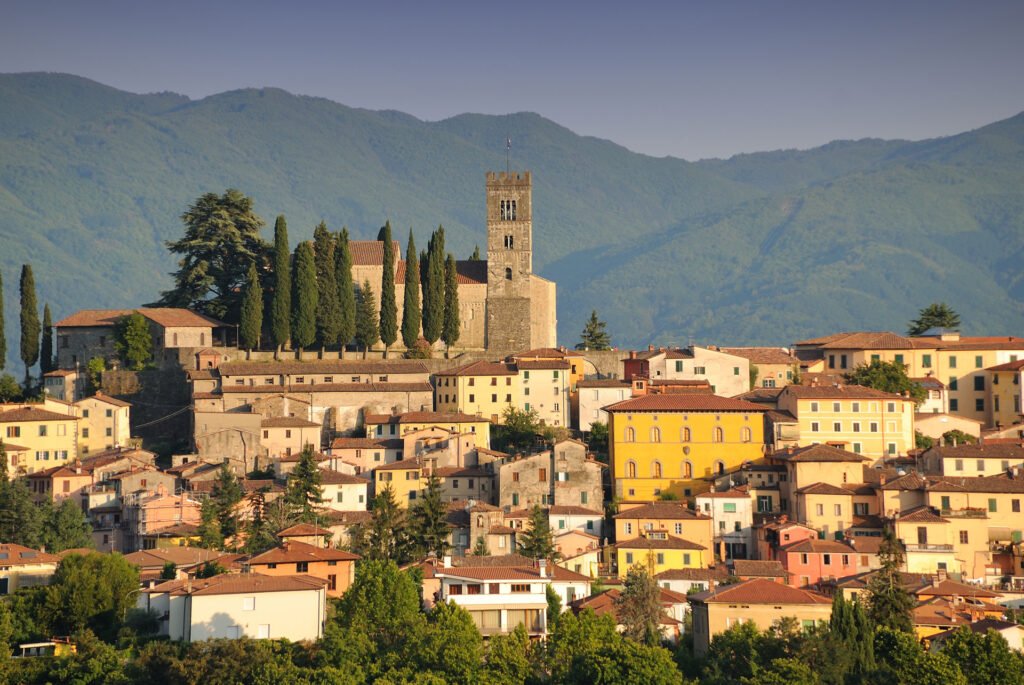
Scotland’s saltire flag flutters above Barga’s historic alleys, while the sound of bagpipes echoes through the olive groves. This Tuscan town often feels like a Celtic mirage in the Italian hills. Most surprising of all, Barga hosts an annual Fish and Chips Festival — serving the British classic with a generous splash of Chianti.
A Dual Identity: How Barga Became the Most Scottish Town in Italy
It might seem unusual to find a Scottish festival in the heart of Tuscany. But for Barga, it is a celebration of roots and reunion. An estimated 60% of Barga’s residents have Scottish ancestry, many of whom returned after generations abroad, bringing with them a rich tapestry of traditions, stories, and food from Scotland’s west coast.
This surprising statistic isn’t merely symbolic—it’s a living, breathing connection. Year-round, visitors can hear Glaswegian and Ayrshire accents mingling with Italian. You may even stumble across homes flying both the Scottish and Italian flags side by side.
The Historical Migration That Changed Barga Forever
Barga’s dual cultural heritage began forming in the early 20th century. At the time, rural Tuscany faced severe economic challenges, pushing thousands to seek work abroad. Many Barghigiani families planned to reach the United States. Instead, they found opportunity in western Scotland’s industrial hubs — especially in Glasgow, Ardrossan, and Largs.
Working in shipyards, forestry, and hospitality, they quickly integrated into Scottish life. Some opened Italian restaurants and gelaterias, while others famously helped shape Scotland’s love for ice cream and fried food.
Many later returned to Barga, often wealthier and more established. They brought Scottish customs back with them. That’s why locals celebrate Burns Night, serve haggis in restaurants, and post signs that say, ‘We speak Italian here.
Culinary Traditions in the Most Scottish Town in Italy: Where Fish and Chips Meets Chianti
Food has always been a cultural bridge, and in Barga, it’s no different. The Sagra del Pesce e Patate (Fish and Chips Festival) held every August is a shining example of culinary duality. For two vibrant weeks, locals and tourists alike gather around communal tables to indulge in golden fried fish and thick-cut chips, often served on paper plates—just like in a traditional Scottish chip shop.
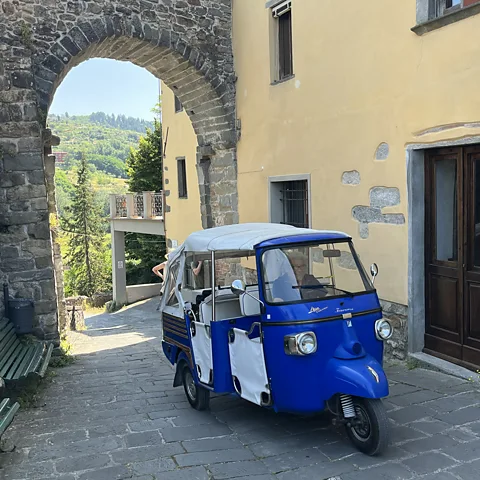
Of course, in true Tuscan style, locals pair these dishes not with Irn-Bru but with local red wine — often a deep, fruity Chianti. The festival draws thousands each year. It has become one of Barga’s most beloved traditions, further strengthening its title as the most Scottish town in Italy.
Tartan, Football, and Telephone Boxes: Symbols of Shared Identity
The Scottish influence on Barga isn’t only felt through food and music. Around town, you’ll spot unmistakable red British telephone boxes. Even the local football team — Gatti Randagi, or Stray Cats — wears green and white hoops. Their kit proudly mimics Glasgow’s Celtic FC.
There’s also the Barga tartan, woven in Italy’s national colors—green, white, and red—but in the traditional plaid pattern. These visual reminders deepen the town’s identity, expressing pride in its blended heritage.
From Glasgow to Tuscany: Personal Stories Behind the Migration
One of the many families who exemplify this cultural fusion is that of Riccardo Orsucci and Adele Pierotti. Riccardo, born in Barga, and Adele, a Glaswegian of Italian descent, met at an Italian cultural club in Scotland. Their relationship—and their return to Barga—symbolizes the emotional return of many Italian Scots to their ancestral homeland.
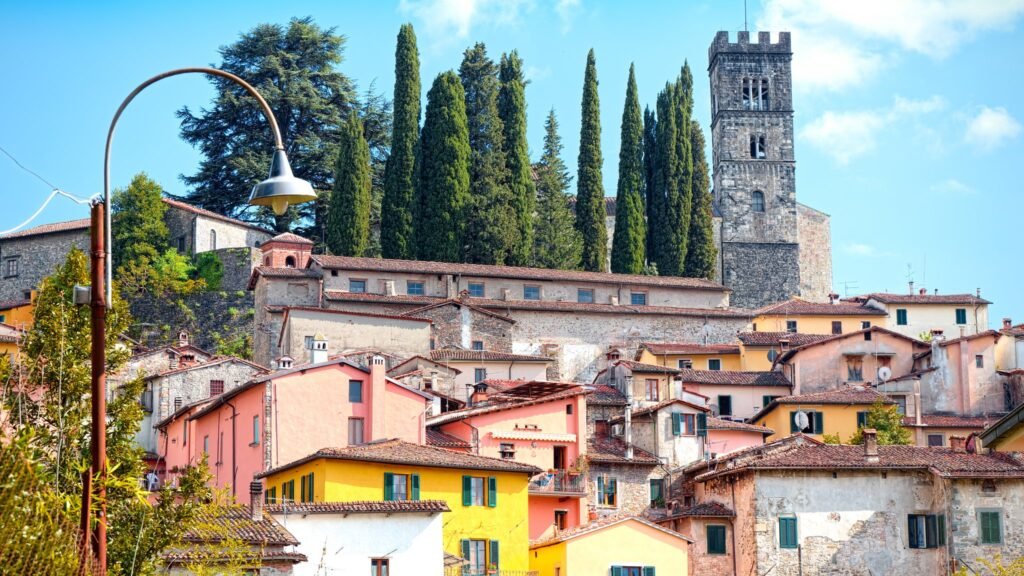
Today, they run Giro Di Boa, a seafood restaurant in Barga that celebrates both cuisines. Their menu includes classic Tuscan dishes alongside fish and chips, and each January, they host a Burns Night to honor Scotland’s national poet, Robert Burns.
Adele humorously notes that hearing thick Ayrshire accents in Tuscany can be disorienting, and even locals sometimes joke that they’ve stepped into a little corner of Glasgow in the hills.
Artistic Inspirations: The Impact of Barga on Scottish Creativity
Barga’s appeal has drawn not only returning families but also artists seeking inspiration. One notable figure was John Bellany, a Scottish painter known for capturing his emotional ties to the sea and his homeland. When Bellany discovered Barga, his palette transformed. Vivid reds, yellows, and Tuscan greens began to color his works, many of which were painted from his home in the town.
Today, Barga hosts a gallery dedicated to Bellany’s work and continues to be a creative haven for painters, sculptors, and musicians—many of whom have Scottish roots.
Twinned Across Borders: Official and Emotional Ties to Scotland
Barga is officially twinned with Prestonpans, Port Seton, Cockenzie, and Longniddry—all towns located in East Lothian, Scotland. These partnerships go beyond ceremonial status; they promote cultural exchanges, student programs, and even family reunions across the generations.
Locals take these bonds seriously. Ask anyone in town, and they will proudly point out which streets or homes belong to families with Scottish ties. Many Italian-Scottish families now own second homes in Barga, making it a popular retreat and a bridge between two homelands.
A Walk Through the Medieval Past
Even without its Scottish connections, Barga is a marvel of medieval architecture. The Duomo di San Cristoforo, with its luminous white limestone façade and hints of Knights Templar symbolism, towers above the town. Built between the 11th and 16th centuries, it’s a reminder of Barga’s former importance in trade and religion.
Walking through Porta Reale, the original gateway to the old town, you transition from modern Tuscany into a labyrinth of alleys, flower-covered balconies, and timeless piazzas. And yes, if you listen closely, you might hear a bagpipe in the distance.
Football, Faith, and Festivals: Bonds Beyond Borders
Barga doesn’t just borrow Scottish traditions—it blends them seamlessly into its own. Locals who support Celtic FC gather at match time, sharing chants in both Italian and English. Football serves as a further link across generations, giving young Barghigiani a sense of pride in both their Italian and Scottish roots.
Similarly, religious celebrations like Easter and All Saints’ Day are often attended by visiting family members from Scotland, reinforcing cultural continuity.
The Future of Barga’s Scottish Legacy
Today, the challenge is preserving these unique connections in a globalized world. With younger generations traveling further afield for work or education, there’s a growing movement to revitalize Barga’s Scottish identity through tourism, festivals, and art.

Town officials are working to establish cultural exchanges, digital archives of migrant stories, and permanent exhibits in local museums to educate future generations about this remarkable cross-cultural journey.
Why Barga Is Truly the Most Scottish Town in Italy
From its dual-language residents to its hybrid culinary delights, from its tartans to its telephone boxes, Barga is not just influenced by Scotland—it is deeply connected to it. Unlike other Italian towns where migration is a footnote, here it is the story.
Barga’s residents don’t just acknowledge their Scottish heritage—they celebrate it. It’s in their art, their food, their festivals, and their daily lives. Whether you’re sipping Chianti or biting into freshly fried fish and chips under a Tuscan sun, there’s no denying that Barga wears its identity proudly.
It may be thousands of kilometers from the Highlands, but in every meaningful sense, Barga truly is the most Scottish town in Italy.
